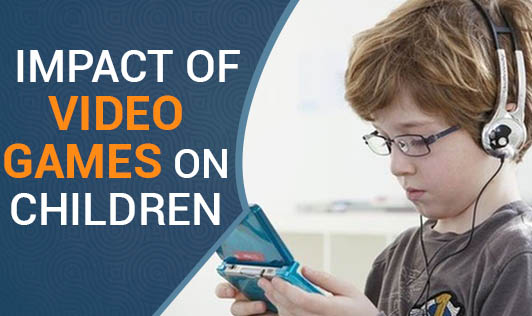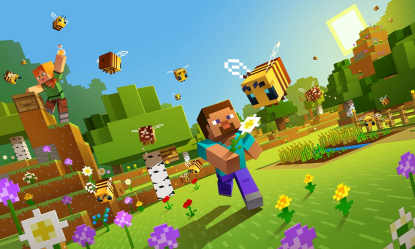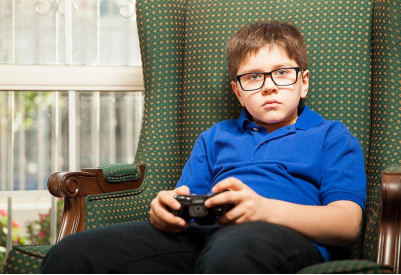
The Positive Impact of Video Games on Children
Contrary to popular belief, not all video games are a waste of time. In fact, research shows that video games can significantly contribute to a child’s cognitive and social development when used appropriately.
1. Enhancing Cognitive Skills
Many video games require critical thinking, strategy, and problem-solving skills. Games like Minecraft encourage creativity and spatial reasoning, while strategy games like Civilization demand resource management and planning. These activities help improve decision-making skills and foster analytical thinking.

2. Improving Hand-Eye Coordination
Fast-paced games, particularly action titles, require players to react quickly to on-screen events. This sharpens hand-eye coordination, reflexes, and fine motor skills. Studies have shown that these benefits may even transfer to real-world tasks requiring precise coordination, such as playing sports or performing surgeries in adulthood.
3. Promoting Teamwork and Social Interaction
Many modern video games offer multiplayer modes where players collaborate to achieve common goals. Through these cooperative experiences, children learn teamwork, communication, and leadership. Online gaming communities also provide opportunities for kids to connect with peers who share similar interests, fostering a sense of belonging.
4. Educational Opportunities
Educational games designed for younger audiences teach essential skills in math, science, language, and history. Platforms like Kahoot! and Prodigy engage children in a fun and interactive way, reinforcing classroom learning.
The Negative Impact of Video Games on Children
While the benefits are notable, the potential downsides of video gaming cannot be overlooked. Excessive or unregulated gaming can have detrimental effects on a child’s physical and mental well-being.
1. Sedentary Lifestyle and Health Issues
Prolonged gaming often leads to a lack of physical activity, contributing to obesity and other health problems. Kids who spend hours in front of screens may also experience eye strain, headaches, and poor posture.

2. Impact on Academic Performance
When gaming becomes a priority over homework or studying, academic performance can suffer. Some children struggle to maintain focus on their studies due to distractions from gaming.
3. Exposure to Inappropriate Content
Not all video games are suitable for children. Games with violent or explicit content can negatively influence behavior, fostering aggression or desensitization to violence. Monitoring the content of games is crucial to prevent exposure to harmful themes.
4. Addiction and Social Isolation
Gaming addiction is a growing concern, especially with the rise of immersive and highly engaging games. Children who prioritize gaming over real-world interactions may become socially isolated, losing interest in other activities or hobbies.
Striking a Balance: Tips for Parents
To ensure the impact of video games on children remains positive, parents can adopt strategies to create a balanced and safe gaming environment:
1. Set Time Limits
Establishing boundaries for gaming time ensures children have enough time for physical activity, homework, and family interaction. Experts recommend no more than two hours of recreational screen time per day.
2. Choose Age-Appropriate Games
Use ratings like the ESRB (Entertainment Software Rating Board) to select games suitable for your child’s age group. Opt for games with educational value or those that promote creativity and problem-solving.
3. Encourage Active Gaming
Motion-based games, such as those available on the Nintendo Switch or VR platforms, encourage physical movement and can be a healthier alternative to traditional sedentary gaming.

4. Participate in Gaming
Playing video games with your child provides an opportunity to bond while monitoring their gaming habits. It also allows parents to understand the content and context of the games their kids play.
5. Promote a Balanced Lifestyle
Encourage your child to participate in extracurricular activities, such as sports, arts, or music, to diversify their interests and reduce over-reliance on gaming as a primary source of entertainment.
The Role of Educators and Society
Schools and community organizations can play a vital role in promoting the healthy use of video games. Incorporating educational games into the classroom can harness the benefits of gaming for learning. Additionally, public awareness campaigns can educate parents about the potential risks and rewards of gaming, empowering them to make informed decisions.
Reasonable view of games: helping children grow better
The impact of video games on children is neither entirely positive nor entirely negative—it depends on how they are used. While video games can enhance cognitive abilities, improve coordination, and promote social interaction, excessive gaming or exposure to inappropriate content can lead to physical, academic, and emotional challenges. By setting boundaries, choosing age-appropriate content, and encouraging a balanced lifestyle, parents can ensure that gaming becomes a constructive part of their child’s development. Ultimately, the key lies in moderation and mindful engagement with this increasingly prevalent form of entertainment.